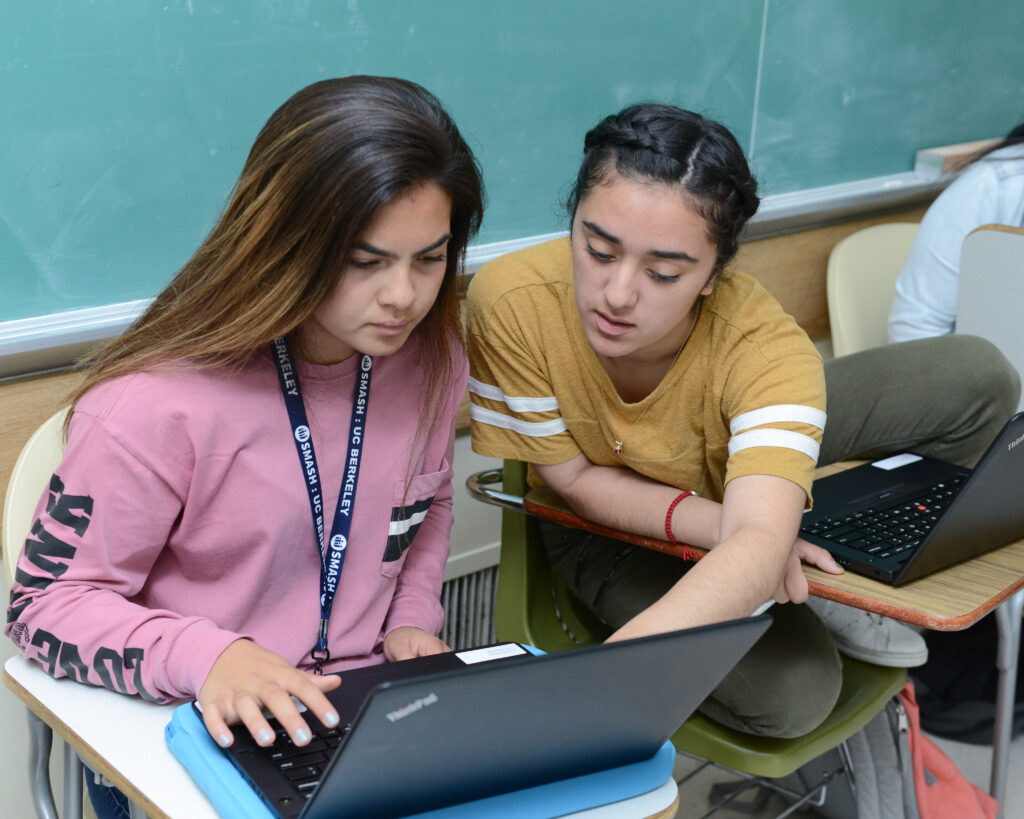TIPP&SEE

Bloom's Level
Use
Setting
Activity
Technology
Related Strategies
Description
TIPP&SEE is a metacognitive learning strategy that scaffolds learning of introductory computational thinking (CT) concepts using the Scratch programming tool. TIPP stands for Title, Instructions, Purpose, and Play, and represents the steps for previewing surface-level features of a Scratch project, such as reading the title, instructions (how to use it), purpose (what it will teach you), and then running the code to see what it does. SEE stands for Sprites, Events, and Explore, representing the steps for examining the structure of the code and modifying the Scratch project. TIPP&SEE is closely related to the Use-Modify-Create CT strategy, but it focuses only on the Use-Modify steps and provides more scaffolding for diverse learners.
When To Use It
As a learning strategy, use TIPP&SEE when you want students to:
- develop the ability to read, trace, and explain code before writing it
- engage in a series of strategic steps and procedures to understand and explore code in an existing Scratch project
- build confidence in understanding how code works in Scratch projects
- become familiar with Scratch projects and block-based programming
As an instructional strategy, use TIPP&SEE when you want to:
- provide guided instruction before students complete open-ended Scratch projects
- develop students’ ability to read, trace, and explain code before writing it
- provide learning experiences that are at an appropriate level of challenge for students
- meet the needs of diverse or struggling learners through further scaffolding of the Use-Modify steps of the Use-
- Modify-Create framework
- use a procedure for teaching the basics of how coding works
How To Use It
Advance Prep
- Identify a Scratch project for students to explore (ex. Scratch Basics Zood Goes Home).
- Prepare written steps for the TIPP&SEE strategy for students to reference (Scratch Encore TIPPSEE Poster).
- Prepare instructions for the TIPP&SEE activities. (ex.U1 TIPP&SEE Google Form)
- Plan to model how to use the TIPP&SEE strategy.
Implementation
- Introduce the TIPP&SEE strategy to students. Tell students they will use this strategy to learn how to code from an existing Scratch project. Explain that TIPP focuses on the “outside” of a Scratch project, using tips from what you see to gain information. SEE focuses on the “inside” of a project, the code that makes it work.
- Model how to use the TIPP&SEE strategy and then have students use the strategy on their own:
- T is for Title: Read the project’s title and predict what it is about.
- I is for Instructions: Read the instructions to understand how to run the program.
- P is for Purpose: Read the purpose to know what you are supposed to do or learn from the project.
- P is for Play: Press the green flag to run or play the program. Describe what happens. Press the spacebar and click on sprites to see what happens.
Then, transition to examining the code using SEE - S is for Sprites (objects or characters). Click on each sprite. Identity features and how many scripts each sprite has.
- E is for Events: Identify which scripts correspond to specific actions.
- E is for Explore: Explore what happens when you make modifications to the project. Change a parameter in a block, add a block, or delete a block.
- Debrief the TIPP&SEE strategy. Ask students what they discovered.
Pros
- Supports metacognition
- Reduces cognitive load through scaffolding
- Meets the needs of diverse or struggling learners
- Helps students develop a deeper understanding of events and sequences in Scratch projects
Cons
- Teachers must carefully consider their students and the Zone of Proximal Flow to ensure that the CS challenges align with the skills of individual students.
Culturally Responsive Application
TIPP&SEE was designed to meet the needs of diverse learners by drawing on evidence-based reading comprehension strategies (previewing and text structure), and scaffolding the Use and Modify steps of the Use-Modify-Create CT framework. TIPP&SEE makes learning introductory computational thinking and computer science concepts accessible to all learners. A major tenet of culturally responsible pedagogy is accessible and equitable learning experiences, and TIPP&SEE enables diverse learners to build an understanding of CT concepts while providing an equitable structure that holds all students accountable for the same learning outcomes.
Emerging English Language Support
Specifically designed for use with Scratch.
Students with Disabilities Support
Provides some much-needed scaffolding for such diverse learners, advancing not just equitable access, but also equitable outcomes in elementary computing.
Subjects
5.3 Data & analysis, 5.4 Algorithms & programming
- ABOUT US
- AREAS OF FOCUS
- Equity in CS EducationAdvancing access and equity in K-12 computer science education
- Inclusive Pathways to TechSupporting inclusive and alternative pathways to tech jobs
- Diversifying Entrepreneurship & VCInvesting in gap-closing companies and funds
- Equitable Tech PolicyAdvancing policy, regulation, and accountability to drive systemic change
- PUBLICATIONS
- RESPONSIBLE AI
- RESOURCES